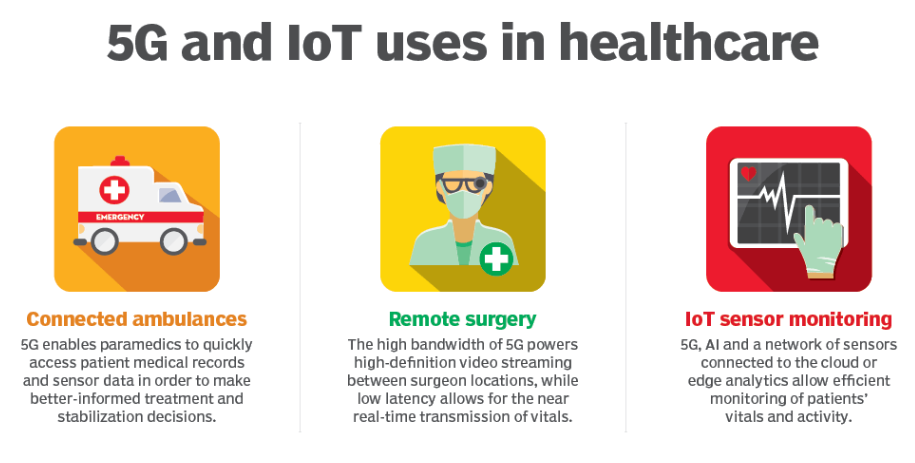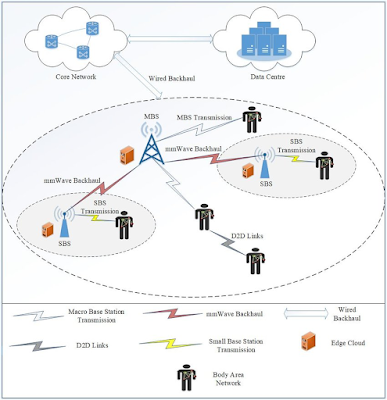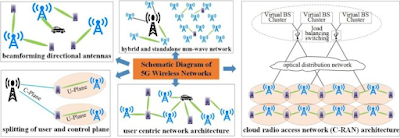5G that is private compared to a public 5G network, with 5G New Radio allows quality-of-service-based priority access.
By offering a secure, dependable, low-latency, high-speed network, this has a significant potential to digitally change companies in the industrial, healthcare, retail, smart cities, railroads, transportation, ports, mining, and energy sectors.
The term "private 5G" refers to a dedicated, independent, private network that is installed and operated on a company's premises; alternatively, it may refer to a portion of the publicly deployed 5G that has been QOS enabled, or it can refer to a mix of on-premises and off-site networks.
The 5G spectrum utilized might be licensed, lightly licensed, or unlicensed depending on the use case.
Private spectrums like Citizens Broadband Radio Service enable businesses to create their own private 5G networks for privately installed 5G networks in the U.S.
Wi-Fi is unlikely to be replaced by private 5G.
Private 5G, on the other hand, may allow real-time deterministic use cases that weren't previously feasible owing to a lack of dependability, determinism, low latency, and high speed — particularly for IoT and edge computing use cases.
Key Factors Providing 5G Technology with Momentum.
- A large number of use cases are made possible by 5G's improved mobile broadband, Ultra Reliable Low Latency Communications (URLLC), and huge Machine Type Communications characteristics.
- Time-sensitive networking (TSN) provided by URLLC with 5G Release 16 provides dependable, low-latency IoT in industrial automation and sectors like healthcare and logistics.
- Benefits are also offered by other aspects including service, policy orchestration, administration, and corporate integration.
The simplicity of implementation, administration, and related costs become crucial criteria for any revolutionary technology to be broadly adopted.
Here is where privately delivered, managed 5G can completely transform the game.
- Due in large part to vendor products that assist in the planning, implementation, and management of private 5G networks on-premises, the difficulty of deploying a private 5G network for businesses has greatly lessened.
- These companies provide SIM management, access points, 5G core, and system orchestration and management as a whole.
Additionally, some companies provide managed private 5G services.
- With privately installed 5G, the required hardware, software, licensing, and cabling may be significantly reduced as compared to business Wi-Fi installations, with the additional advantage of predictable performance with low latency, lower power-to-coverage ratio, and higher speed.
There are several use cases that may be made possible by the IoT and edge computing working together over private 5G.
Applications in Healthcare
A hospital that offers linked care via the internet of medical things might profit from private 5G as well.
A private 5G network may enable remote patient monitoring, for instance, by allowing different health sensors to broadcast low-latency, high-frequency sensor streams to the team of physicians and nurses through an IoT platform.
Fast file transfers between medical equipment, such an MRI machine and a CT scanner, are another benefit of private 5G.
This is crucial in emergency cases when a patient's CT or MRI must be examined prior to taking any further action and where time is of the importance.
Industrial Applications in Manufacturing
Consider a manufacturing facility with cameras installed on the assembly line to look for mechanical flaws in the components being produced.
The edge computing infrastructure may directly operate the cameras and related AI/computer vision model that identifies flaws.
An edge cluster's benefit allows businesses to run more sophisticated, computationally costly models for precise fault identification or to add to the camera's real-time intelligence.
A simpler AI model that performs early detection tasks may be used by the camera.
Then, a more complicated model may be performed by the AI model on the real-time video stream connected to an edge cluster to provide additional accuracy and insights.
When TSN is used in conjunction, real-time decisions to remove the flawed product may be conveyed to other parts of the manufacturing line, often through a synchronized robot.
Consider autonomous mobile robots with cameras for logistically detecting items in the same setting.
Mobile robots may perform navigation-related intelligence tasks while a real-time video feed is supplied to the edge computing infrastructure for cutting-edge AI models to identify different sorts of items and inventories.
5G's Problems to Solve
The promise of private 5G for corporate use cases including IoT and edge computing is not without issues that the market has to solve; a production-level system needs several touchpoints.
Service providers, system integrators, and IT teams are required for the planning, deployment, verification, and management of private 5G networks.
Edge computing combines software and hardware.
Particularly for real-time, mission-critical systems, each of these components might fail, thus they must be maintained and updated essentially without any downtime.
Edge installations must be managed by administrators using containers or VM orchestration.
By offering a virtual edge computing platform for application developers, public cloud providers and managed open source suppliers are both tackling this market.
Developers may find it simpler now that public cloud companies are beginning to offer edge infrastructure that is ready to go and runs the same software as their public cloud.
The Trend/Direction of Private 5G and IoT
The industry has to create a thorough roadmap if private 5G, IoT, and edge are to succeed.
Many of these solutions need constant upkeep and improvements.
- In order to utilize private 5G and IoT efficiently, organizations interested in edge computing and IoT installations must cope with the large number of suppliers, integrators, and service providers they must work with.
- This is due to the fact that investigating and installing sensors, robotics, gateways, edge infrastructure, edge virtualization and orchestration frameworks, private 5G infrastructure, and SIM management needs the involvement of many suppliers and specialized knowledge.
For IoT and remote device management, businesses must also take edge computing software into account.
- AI infrastructure may combine commercial off-the-shelf technologies with GPUs for AI acceleration, depending on the use case.
- Working with various suppliers is challenging, but it is made easier by having a system integrator who can serve as a single point of contact.
- To integrate, implement, and maintain the IoT solutions on private 5G, the system integrator must work on-site and collaborate closely with the 5G provider, IoT and edge computing software vendor, any infrastructure OEMs, and the organization's IT staff.
- Proofs of concept are easy to show and are a vital initial step, but it might take some time and money to develop a fully integrated production-grade system that satisfies the use cases specified in the service-level agreement.
- Additionally, the system has to be monitored and updated continually after it is online.
It's crucial for service providers, solution providers, and system integrators to remain focused on bringing one or two use cases to full production rather than becoming distracted by the hype or enormous potential that 5G may provide.
Enterprises can fully benefit from what private 5G and IoT have to offer if they have the proper service providers, technologies, and business use cases.
Find Jai on Twitter | LinkedIn | Instagram













